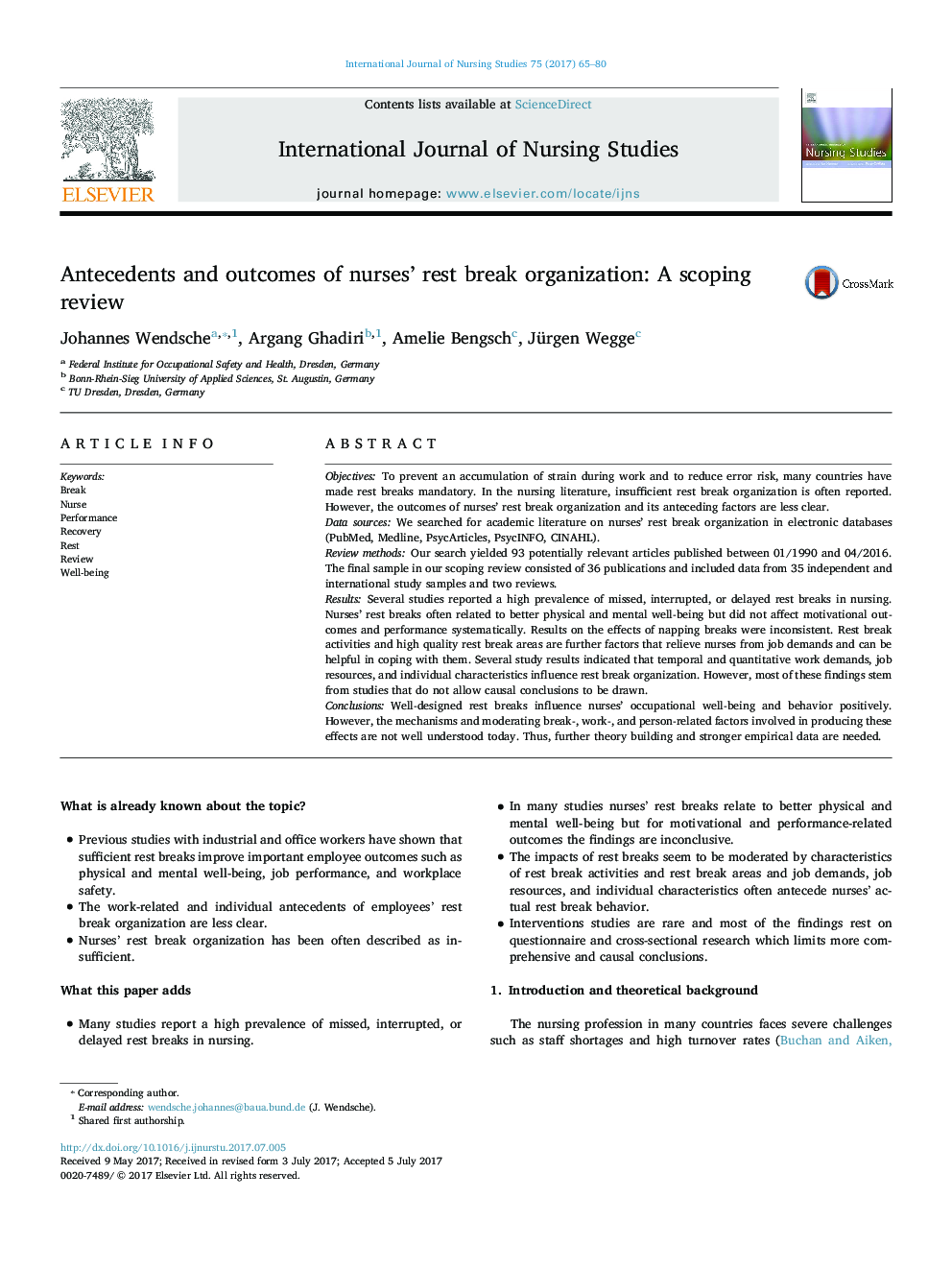| Article ID | Journal | Published Year | Pages | File Type |
|---|---|---|---|---|
| 5120937 | International Journal of Nursing Studies | 2017 | 16 Pages |
ObjectivesTo prevent an accumulation of strain during work and to reduce error risk, many countries have made rest breaks mandatory. In the nursing literature, insufficient rest break organization is often reported. However, the outcomes of nurses' rest break organization and its anteceding factors are less clear.Data sourcesWe searched for academic literature on nurses' rest break organization in electronic databases (PubMed, Medline, PsycArticles, PsycINFO, CINAHL).Review methodsOur search yielded 93 potentially relevant articles published between 01/1990 and 04/2016. The final sample in our scoping review consisted of 36 publications and included data from 35 independent and international study samples and two reviews.ResultsSeveral studies reported a high prevalence of missed, interrupted, or delayed rest breaks in nursing. Nurses' rest breaks often related to better physical and mental well-being but did not affect motivational outcomes and performance systematically. Results on the effects of napping breaks were inconsistent. Rest break activities and high quality rest break areas are further factors that relieve nurses from job demands and can be helpful in coping with them. Several study results indicated that temporal and quantitative work demands, job resources, and individual characteristics influence rest break organization. However, most of these findings stem from studies that do not allow causal conclusions to be drawn.ConclusionsWell-designed rest breaks influence nurses' occupational well-being and behavior positively. However, the mechanisms and moderating break-, work-, and person-related factors involved in producing these effects are not well understood today. Thus, further theory building and stronger empirical data are needed.
